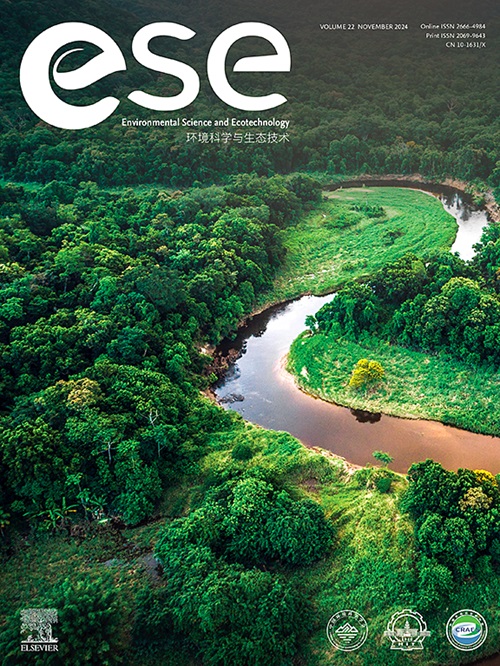Hypersaline organic wastewater treatment: Biotechnological advances and engineering challenges
IF 14.3
1区 环境科学与生态学
Q1 ENVIRONMENTAL SCIENCES
引用次数: 0
Abstract
The sustainable treatment of hypersaline organic wastewater (HSOW) remains a significant challenge in industrial wastewater management, as conventional approaches often fail to meet stringent discharge standards and low-carbon sustainability targets. Halotolerant and halophilic microbial strains offer promising solutions, yet their application is hindered by limited stress resistance, thus hindering effective treatment and achieving near-zero liquid discharge. In this review, we systematically examine endogenous strategies, such as microbial mutualism and genetic engineering, alongside exogenous approaches, including functional materials, electrical and magnetic stimulation, and 3D bioprinting, to improve microbial resilience in hypersaline environments. Furthermore, we propose an integrated treatment framework that combines physicochemical and biochemical processes, leveraging biological detoxification and biological desalination to enhance the treatment of HSOW while minimizing environmental impact and carbon emissions. By advancing the understanding of microbial stress adaptation and optimization strategies, this review provides critical insights into the development of sustainable, low-carbon wastewater treatment solutions.

高盐有机废水处理:生物技术进步和工程挑战
高盐有机废水(HSOW)的可持续处理仍然是工业废水管理中的一个重大挑战,因为传统方法往往无法满足严格的排放标准和低碳可持续发展目标。耐盐和嗜盐微生物菌株提供了有前途的解决方案,但它们的应用受到有限的抗逆性的阻碍,从而阻碍了有效的处理和实现接近零的液体排放。在这篇综述中,我们系统地研究了内源性策略,如微生物共生和基因工程,以及外源性方法,包括功能材料,电和磁刺激,以及3D生物打印,以提高高盐环境下微生物的恢复能力。此外,我们提出了一种综合处理框架,结合物理化学和生物化学过程,利用生物解毒和生物脱盐来加强对HSOW的处理,同时最大限度地减少对环境的影响和碳排放。通过促进对微生物胁迫适应和优化策略的理解,本综述为可持续、低碳废水处理解决方案的发展提供了重要见解。
本文章由计算机程序翻译,如有差异,请以英文原文为准。
求助全文
约1分钟内获得全文
求助全文
来源期刊

Environmental Science and Ecotechnology
Multiple-
CiteScore
20.40
自引率
6.30%
发文量
11
审稿时长
18 days
期刊介绍:
Environmental Science & Ecotechnology (ESE) is an international, open-access journal publishing original research in environmental science, engineering, ecotechnology, and related fields. Authors publishing in ESE can immediately, permanently, and freely share their work. They have license options and retain copyright. Published by Elsevier, ESE is co-organized by the Chinese Society for Environmental Sciences, Harbin Institute of Technology, and the Chinese Research Academy of Environmental Sciences, under the supervision of the China Association for Science and Technology.
 求助内容:
求助内容: 应助结果提醒方式:
应助结果提醒方式:


